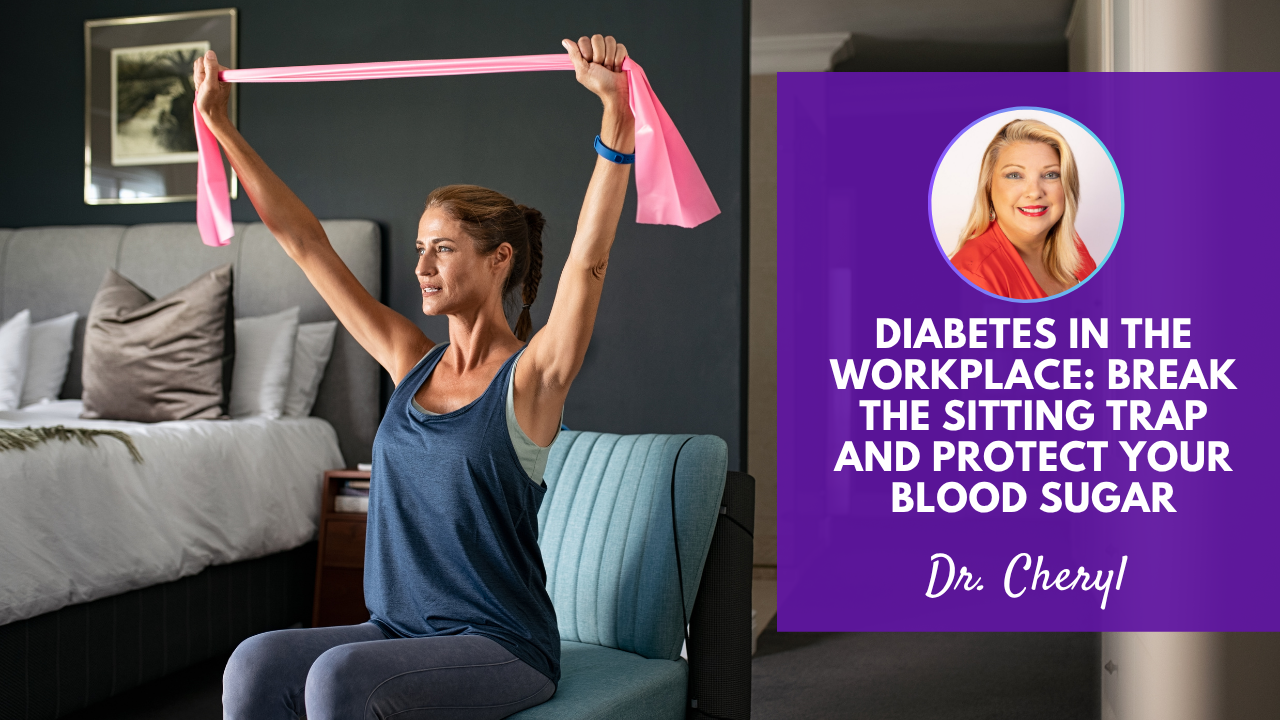
Health Literacy Month: Moving with Confidence When You Have Diabetes
October is Health Literacy Month, a time to focus on how understanding health information empowers daily choices. In the third week of our series, we're highlighting movement. Exercise is often described as medicine for people with diabetes, but without clear information, it can also feel confusing or intimidating. Should you walk after meals? Is weight training safe? How do you avoid low blood sugar while staying active? These are not just exercise questions. They are health literacy questions.
Health literacy gives you the tools to interpret information about exercise, understand how it applies to your unique situation, and move forward with confidence. For busy people living with diabetes and managing full lives, it means you can cut through conflicting advice, create realistic routines, and make movement an empowering part of your diabetes care.
Why Movement Matters for People with Diabetes
Physical activity helps regulate blood sugar, improve circulation, support heart health, and increase energy. When you're living with diabetes, even short bouts of exercise can make a measurable difference. Movement encourages the muscles to use glucose more effectively, which lowers blood sugar levels naturally. It also reduces stress, which indirectly supports steadier blood sugar control.
According to the Centers for Disease Control and Prevention, consistent activity helps improve insulin sensitivity and lowers the risk of long-term complications. When you understand these benefits, you are more motivated to make fitness part of your daily routine. This is health literacy in action - knowing why movement works and how to apply it in a way that fits your life.
Decoding Exercise Information with Health Literacy
Not all exercise advice is created equal. Some articles recommend long hours of cardio, while others suggest high-intensity intervals or heavy strength training. Health literacy helps you assess whether those recommendations are safe and realistic for your body.
By learning how exercise affects blood sugar and by paying attention to your own responses, you can filter out noise and focus on strategies that serve you best. This keeps fitness for people with diabetes from becoming overwhelming and turns it into a sustainable habit.
The Best Diabetes-Friendly Movements for Busy Lives
You don't need hours in the gym to see benefits. Short, consistent practices can make a big impact:
- A brisk 10-minute walk after meals, which helps reduce blood sugar spikes.
- Seated stretches or standing breaks during long workdays.
- Light resistance training at home using bands or bodyweight.
- Weekend activities such as gardening, dancing, or swimming.
These forms of exercise for blood sugar control are practical, effective, and easy to fit into a packed schedule.
How to Start Moving Safely with Diabetes
- Check your blood sugar before activity.
- Choose a movement you enjoy, such as walking or stretching.
- Start with 10 minutes a day and gradually increase.
- Monitor your blood sugar after exercise.
- Adjust meals or snacks if needed to stay balanced.
This simple process ensures you can begin exercising with confidence and safety.
Explore More on How Movement Supports Your Whole Health
If you would like to dive deeper into the benefits of activity, visit our blog How Movement Protects Both Mind and Blood Sugar. It explains how regular movement does more than improve glucose control. It also strengthens mental health, reduces stress, and supports clarity. Together with this week’s focus on health literacy, it shows why moving with confidence is one of the most powerful tools you have for long-term wellness.
Frequently Asked Questions
What type of exercise is best for people with diabetes?
The best exercise is the one you enjoy and can sustain. Walking, strength training, and stretching all support blood sugar control and overall health. Consistency matters more than intensity.
How often should people with diabetes exercise?
Most experts recommend at least 150 minutes of moderate activity per week. This can be broken into short daily sessions. Even a brisk walk after meals can make a difference.
Can exercise cause low blood sugar?
Yes. Some types of exercise, especially when combined with insulin or other medications, can lower blood sugar. Checking your levels before and after activity helps you exercise safely.
Build Clarity and Confidence in Your Diabetes Journey
Movement is not just about burning calories. It is about understanding how exercise works with your body and using that knowledge to feel stronger, healthier, and more confident in your diabetes care. This is the heart of health literacy - learning, applying, and moving forward with clarity.
As you celebrate Health Literacy Month, let movement be a reminder that you don't need extreme workouts to see progress. Small, intentional steps can bring lasting results like using a 3 pound weight while watching your favourite tv show is a great way to get movement in.
When you are ready to go deeper, book a complimentary Diabetes Wellness Connection Call today. It's your opportunity to explore your goals, talk through challenges, and discover strategies that fit your lifestyle and empower your wellness journey.
ABOUT THE AUTHOR

Dr. Cheryl
Dr. Ac., C.H., RDH
Dr. Holistic Studies, Dr. Acupuncture
Diabetes Wellness Strategist & Coach
Creator & CEO of Holistic Diabetes Solutions
8 X International Best-Selling Author
As a woman living with diabetes for over 30 years, Dr. Cheryl understands the journey firsthand. When she was diagnosed, she received the same outdated advice her grandmother was given for over four decades, who relied primarily on medication, suffered from deteriorating health and eventually lost her life to diabetes. Fueled by this experience, Dr. Cheryl was compelled to seek a better way. Through countless research studies and trials, she developed the winning holistic approach: the Diabetes Success System which merges traditional wisdom with today’s best holistic self-care practices. It has revolutionized diabetes management by providing a trusted way to maintain consistent and predictable healthy blood sugar levels.
_______________________
PROFESSIONAL DISCLAIMER
The material and content contained in this platform is for overall general diabetes health and education information only. It is not intended to constitute medical advice or to be a substitution for professional medical recommendations, diagnosis or treatment. All specific medical questions or changes you make to your medication and/or lifestyle should be discussed and addressed with your primary healthcare provider. Having the right mindset, doing the right movements at the right times of day, and eating foods that help keep blood sugar, insulin, and inflammation manageable can dramatically reduce your risk of the all-too-common complications of Diabetes, increase your energy levels and have you feeling your best every day.






